
You can be part of it right now with the opening of the groundbreaking exhibition, Revelations: Art from the African American South on view until April 1, 2018.
Once again, the de Young is soaring to new and exciting heights in both their exhibitions and comprehensive collection of American Art (we get it already— you’re great). We’re not really complaining though, because what they’ve cooked up this time is a very necessary breath of fresh air.

This exhibition celebrates the de Young’s major acquisition of 62 works from contemporary African American artists from the Southern United States. The pieces came into the museum’s possession just four months ago, via The Souls Grown Deep Foundation in Atlanta, and the exhibition opens early this month. It only took them FOUR months to put together a comprehensive, thoughtful exhibition that spans seven galleries. In other words, they needed to get a move on, and coincidentally, so do you if you want to see this landmark exhibition.
Serious moment alert!

These galleries highlight a visual language that was established by a group that was being oppressed and stripped of basic human rights, and so they chose creation as a way to cope with the injustices they were facing everyday. Today, these works celebrate the resiliency of the human spirit and of people that, despite adversity, have held tight to their values and culture; they give a voice back to those who historically weren't given the privilege of speaking up. There may be graphic or disturbing imagery for some folks so fair warning. ~Okay, serious moment over~
Revelations has a little bit of everything: sculpture, textiles, assemblage (hoity toity term for putting a bunch of 3-D objects on a canvas), you name it. However, since it debuts some lesser known artists, it may be hard to wrangle your squad into going with you to see it, especially when you’re competing with Munch at the SFMOMA and Dorothea Lange across the bay at the Oakland Museum, but fight the museum fatigue(!) because we can say with confidence that this show is not to be missed (for starters, it’s the first of its kind in the area— a de Young™ original). Although there may be some coercing required to make the journey over to the park, you mustn't fear, as I’m here to come to your rescue by putting faces to names and giving you the top reasons that you should get in the car—or bike, walk, cable car, whatever works—and GO, GO, GO to the de Young immediately.
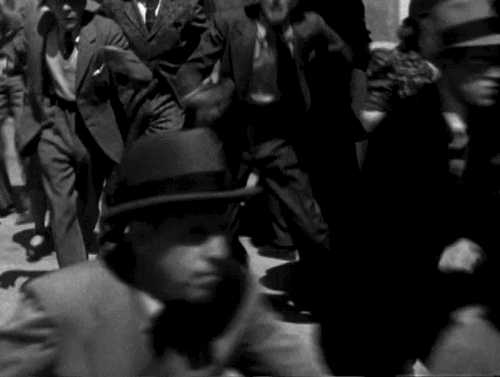
1. There’s an artist you may not have heard of whose work is beyond mesmerizing.
Thornton Dial, Sr. is often compared to Jackson Pollock for his erratic, splish splash painting style and “leave it all on the canvas” attitude. It’s not necessarily fair, however, to say that Pollock influenced Dial’s contemporary pieces, as the latter has always made a point of staying blissfully unaware of the history of art. When he first started out, he felt that he was just making "things."
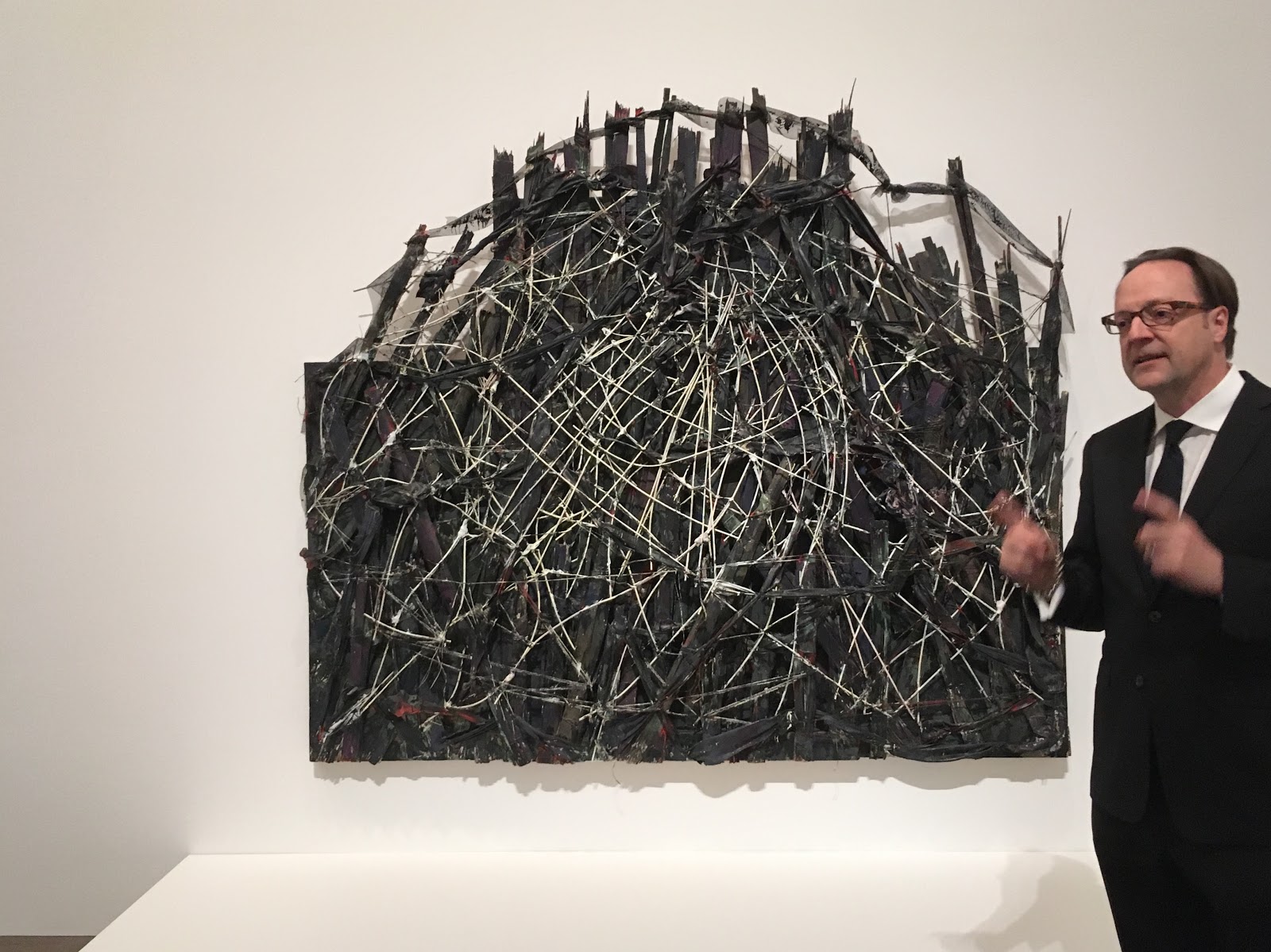
10 points to whoever can tell me what this is made out of.
*drum roll* wood, wire, chair caning and cloth. Dial really takes the “where’s waldo” approach and makes you dig deep to figure out his pieces. The coolest part about them? They are SO fun to look at. It’s hard to tell unless you see them in person, but these sculpture-painting hybrids seem ready to jump off of the wall and I had the absolute hardest time reigning in my impulse to touch them. PSA: Don't touch the art, unfortunately.
New Light (2004) was made in reference to the sad fact that African American communities in the South were some of the last ones to receive basic utilities like electricity (Dial didn't see it until he was ten years old). The foundational structure of a picket fence symbolizes segregation and life in rural Alabama. The electrical wire that he’s attached in an almost bird’s nest clump, again, represents this glaring inequality as well as the relief that they felt when electricity was installed, finally making it possible for young children to do their homework in the light.
2. You may or may not see some real skeletons
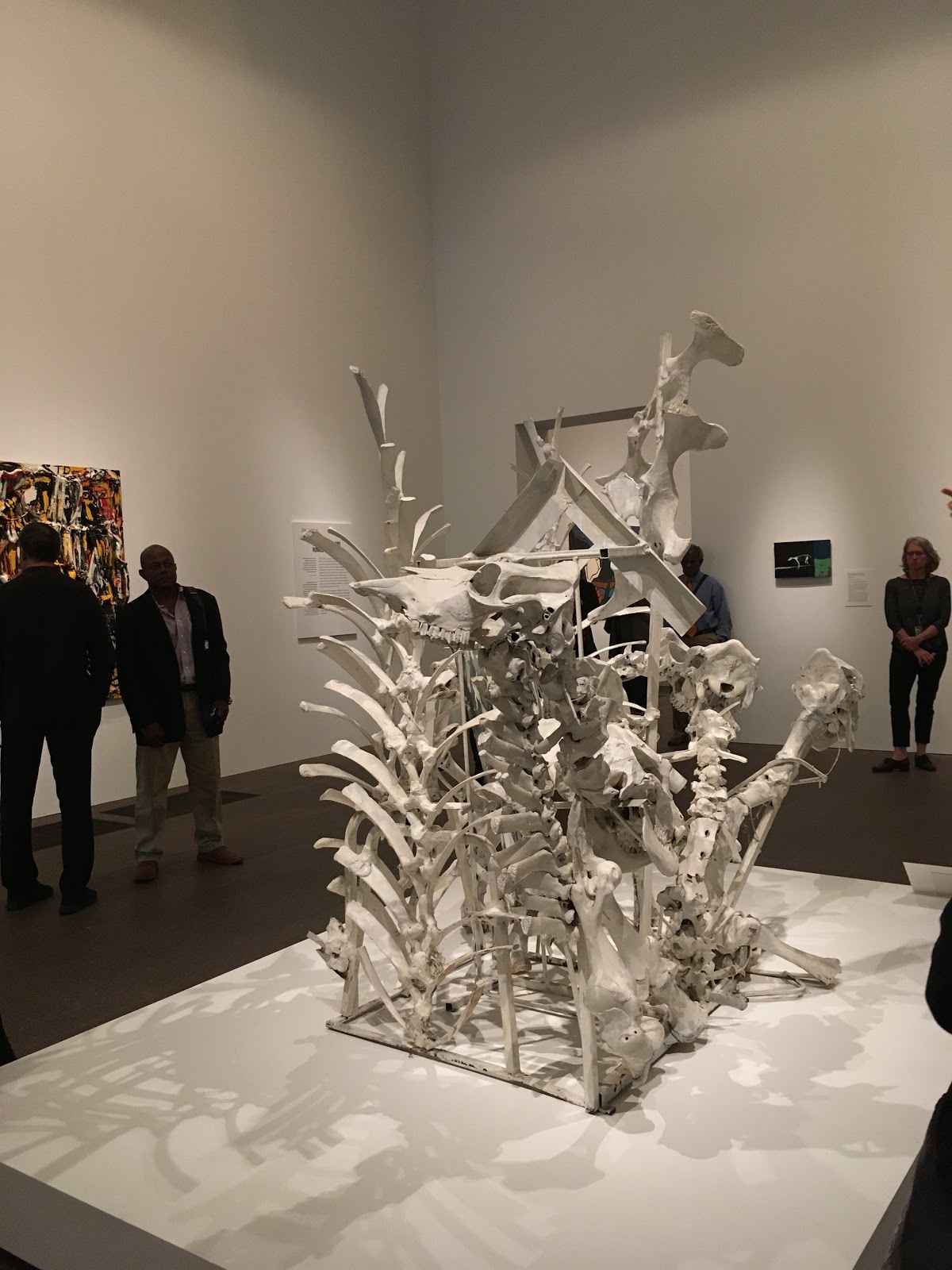
No actual cows were harmed in the making.
In case you didn't catch our Instagram story from the press preview, I thought I should let you know about this striking piece that also made me slightly squeamish. This is the work of Thornton Dial again but in 360 degrees. Tada! He didn't only do sculptural-painting-sculptures, but also real sculpture-sculptures...Uhh anyway, this piece is made from real cow bones that he painted white before mounting them together into this composite sculpture, Lost Cows (2000-2001). It also includes such objects as golf balls, bags, mirrors, and enamel.
Dial drew this broad theme of life and death from his childhood working on a farm. There's a human skeletal form in the back that struggles to control his herd of white cows, representing how the white man would have been lost without African Americans to be the laborers, cooks etc.
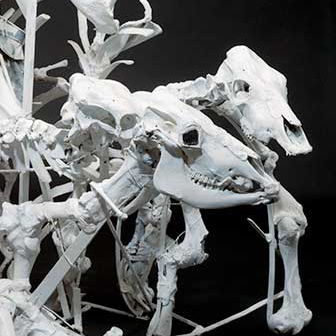
Hey lil' buddies, photo via de Young
3. You’ve never seen quilts as colorful as these
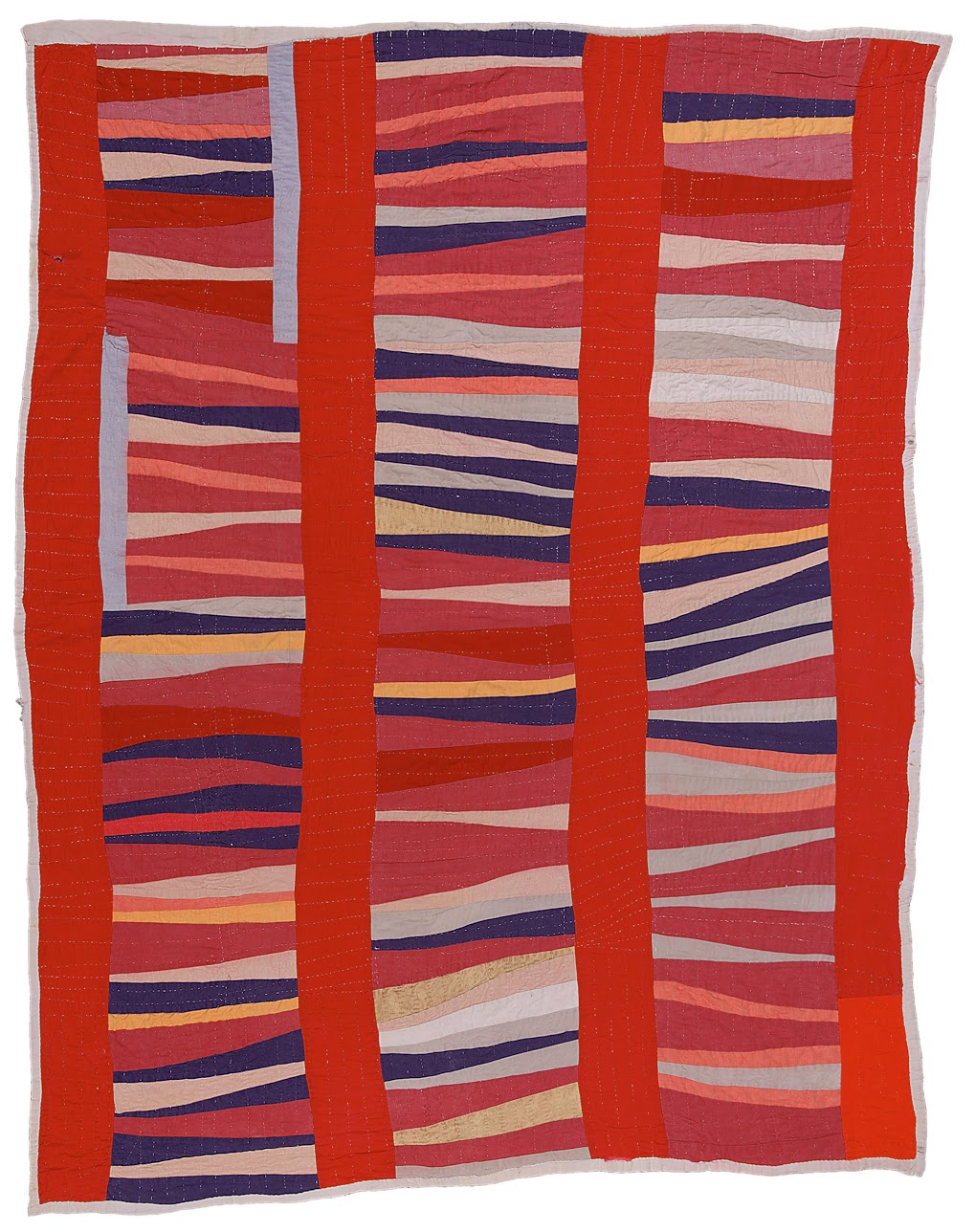
Fiber arts meets smooth jazz riffs, image via Souls Grown Deep
The exhibition also highlights the strong tradition of quilt making that developed around 1859 in Gee's Bend, a small rural town in Alabama, and incorporated pieces of everyday life.
This quilt, Bars and String-Pieced Columns (1950s), was made by Jessie T. Pettway, aka Bootnie, who learned quilt making at a young age from her aunt. Fabric was scarce, so they used whatever they could scrounge up—old khaki t-shirts and torn-up overalls—which often ended up being clothes that they wore while working in the fields. She almost never used patterns. Instead, she improvised her vibrant compositions, asserting that, "[she] couldn't buy pretty materials, so [she] couldn't make pretty patterns." Fun fact: this quilt was featured on a 2006 postage stamp commemorating the Gee's bend quilters.
4. Or quilts used to make prints
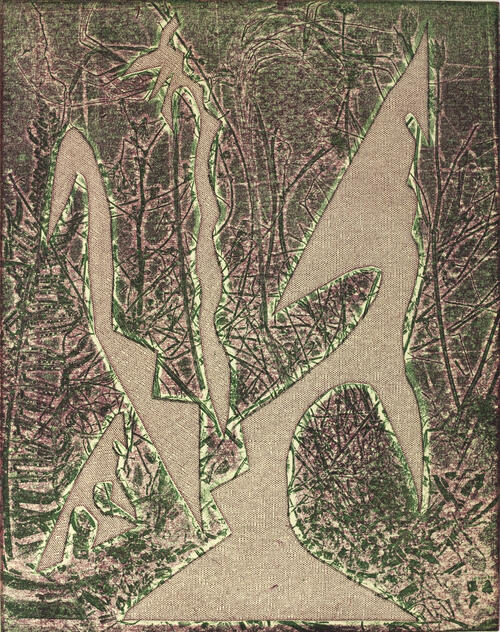
This is not a quilt. (lol @ Duchamp jokes), photo via Artsy
It is, in fact, just an impression of a quilt. More specifically, this is a print that was made by sewing a miniature quilt, pressing the surface down into a soft ground, and then coloring it. This took an already very familiar medium and elevated it to an entirely new level of abstract, colorful goodness. This process was actually initiated by Pam Paulson, a Berkeley artist who brought a few of these master quilt makers to her studio to introduce them to printmaking in 2005.
Lonnie Holley made the print featured above, Coming out of the Redwoods, after a 2013 trip to the redwoods in Humboldt, CA (not too far from the Sartle office in SF!). Holley took this process a step further by incorporating found objects and scraps that he found inside and outside of the printmaking studio.
5. There’s an El Anatsui
Enough said— those sultry, undulating golden hills are enough to get me off of the couch any day, any time. Go see this beaut, Hover II (2004), in person today!
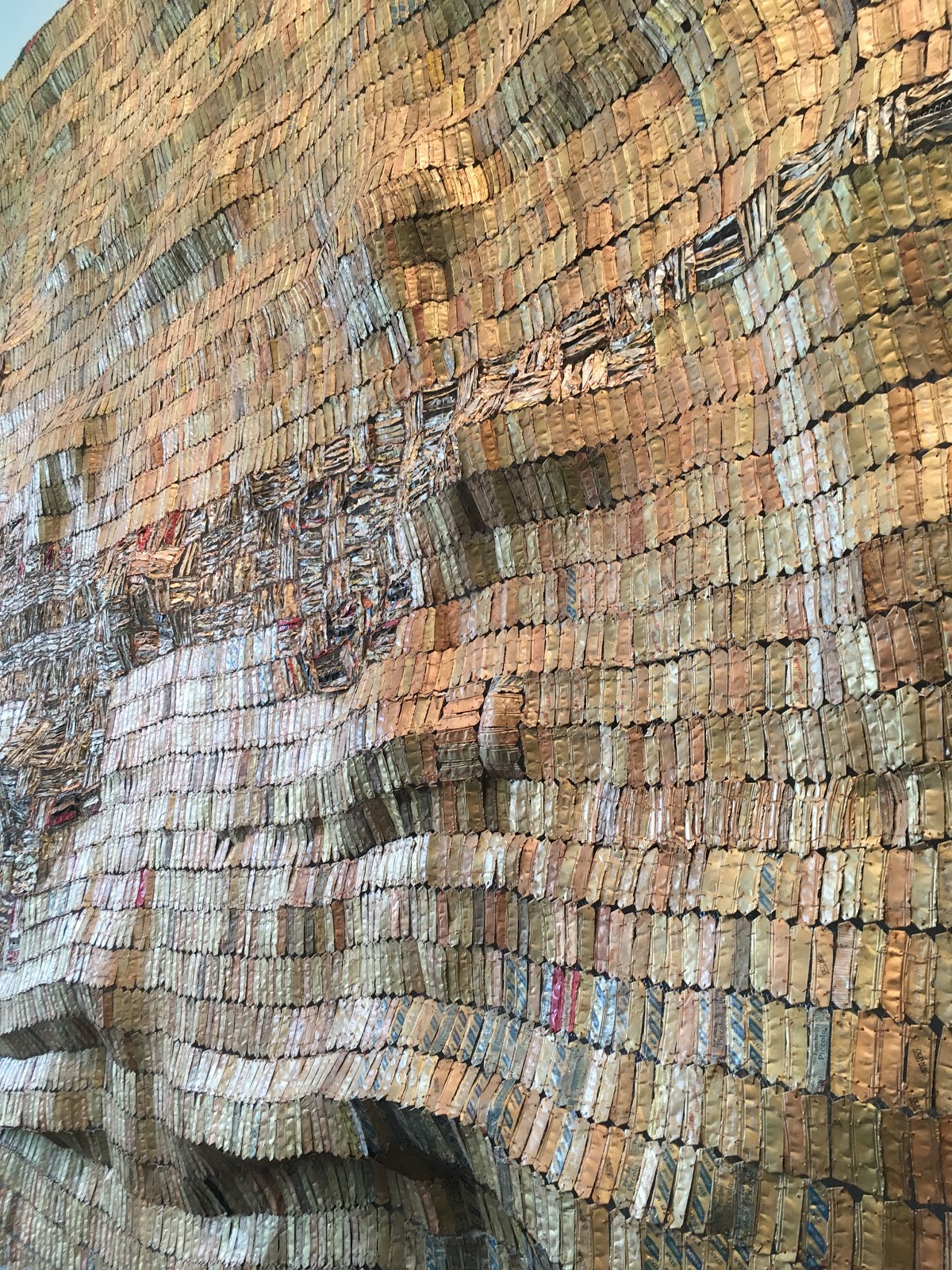
If this wasn't convincing, you can check out the digital preview on the de Young's website. I can't stress enough how poignant this exhibition is, as it debuts an entire group of American artists that have been otherwise ignored by the strong arm of art history. We're (re) writing history here, folks!
Let us know what stands out to you by tagging us in your photos from the exhibition on Twitter with @sartle or Instagram with @sartle.arthistory. We can't wait to hear what you think!
Photos and text by Rose









